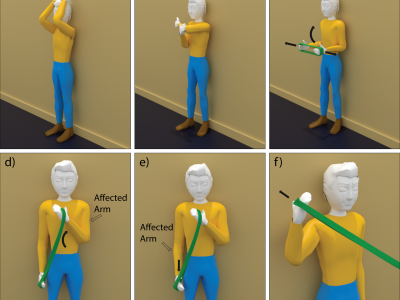Health
Amidst the COVID-19 pandemic, cyberbullying has become an even more serious threat. Our work aims to investigate the viability of an automatic multiclass cyberbullying detection model that is able to classify whether a cyberbully is targeting a victim’s age, ethnicity, gender, religion, or other quality. Previous literature has not yet explored making fine-grained cyberbullying classifications of such magnitude, and existing cyberbullying datasets suffer from quite severe class imbalances.
- Categories:
 3736 Views
3736 ViewsThis heart disease dataset is curated by combining 3 popular heart disease datasets. The first dataset (Collected from Kaggle) contains 70000 records with 11 independent features which makes it the largest heart disease dataset available so far for research purposes. These data were collected at the moment of medical examination and information given by the patient. Second and third datasets contain 303 and 293 intstances respectively with 13 common features. The three datasets used for its curation are:
-
Cardio Data (Kaggle Dataset)
- Categories:
 15214 Views
15214 ViewsThis heart disease dataset is curated by combining 5 popular heart disease datasets already available independently but not combined before. In this dataset, 5 heart datasets are combined over 11 common features which makes it the largest heart disease dataset available so far for research purposes. The five datasets used for its curation are:
- Categories:
 42913 Views
42913 ViewsShoulder Physiotherapy Activity Recognition 9-Axis Dataset (SPARS9x)
Suggested uses of this dataset include performing supervised classification analysis of physiotherapy exercises, or to perform out-of-distribution detection analysis with unlabeled activities of daily living data.
Description:
- Categories:
 1401 Views
1401 ViewsOptical Character Recognition (OCR) system is used to convert the document images, either printed or handwritten, into its electronic counterpart. But dealing with handwritten texts is much more challenging than printed ones due to erratic writing style of the individuals. Problem becomes more severe when the input image is doctor's prescription. Before feeding such image to the OCR engine, the classification of printed and handwritten texts is a necessity as doctor's prescription contains both handwritten and printed texts which are to be processed separately.
- Categories:
 19404 Views
19404 Views
The data uploaded here shall support the paper
Decision Tree Analysis of ...
which has been submitted to IEEE Transactions on Medical Imaging (2020, September 25) by the authors
Julian Mattes, Wolfgang Fenz, Stefan Thumfart, Gerhard Haitchi, Pierre Schmit, Franz A. Fellner
During review the data shall only be visible for the reviewers of this paper. Afterwards this abstract will be modified and complemented and a dataset image will be uploaded.
- Categories:
 224 Views
224 ViewsMicroscopic image based analysis plays an important role in histopathological computer based diagnostics. Identification of childhood medulloblastoma and its proper subtype from biopsy tissue specimen of childhood tumor is an integral part for prognosis.The dataset is of Childhood medulloblastoma (CMB) biopsy samples. The images are of 10x and 100x microscopic magnifications, uploaded in separate folders. The images consist of normal brain tissue cell samples and CMB cell samples of different WHO defined subtypes. An excel sheet is also uploaded for ease of data description.
- Categories:
 1776 Views
1776 Views
We present a novel, low-cost telerehabilitation system dedicated for bimanual training. The system captures the user’s movements with a Microsoft Kinect sensor and an inertial measurement unit (IMU). Herein, we deposit data we collected on a single, healthy subject who interacted with our system as described in our manuscript.
- Categories:
 165 Views
165 Views
The dataset is used in "EXPACT: Explainable complex machine learning prediction of all-cause mortality in the U.S."
- Categories:
 570 Views
570 Views




